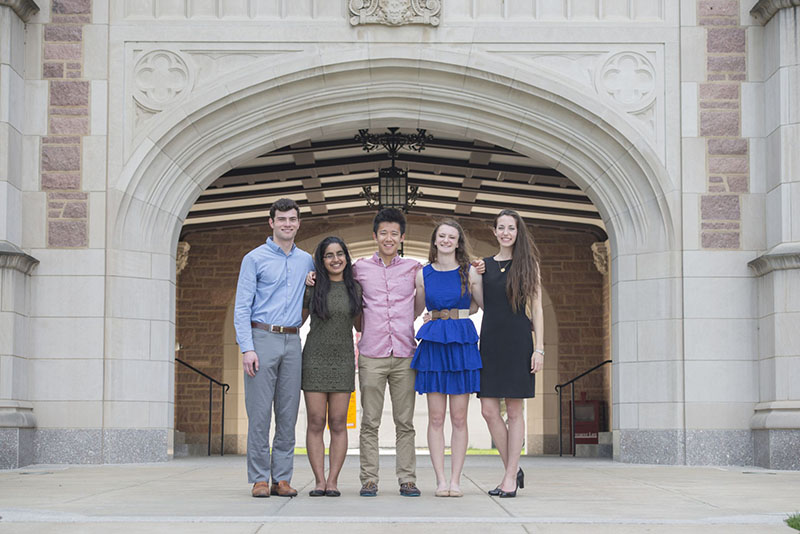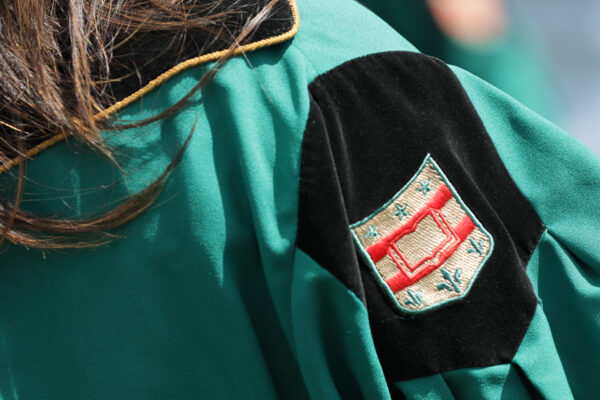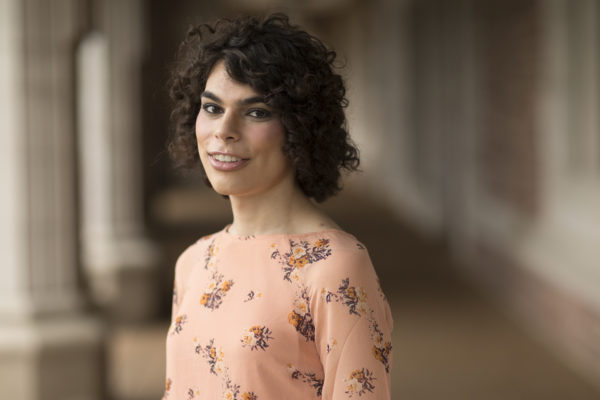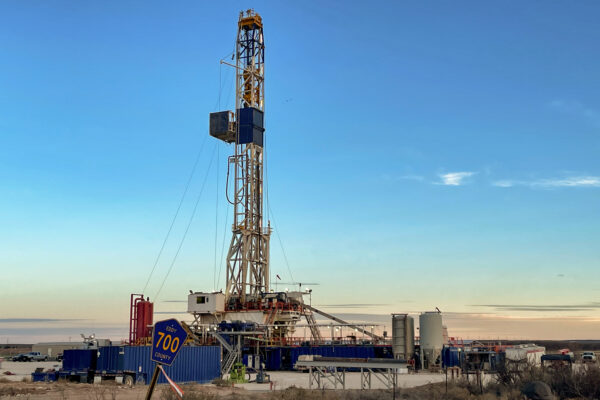
#4Solo
That’s the hashtag that motivated Washington University in St. Louis engineering students Kailin Baechle, Zach Bluestein, Sydney Katz, Anna Noronha and Harold Zhu to keep searching for an answer to an urgent problem: how to develop a source of clean water for children like Solo, a young girl in Madagascar.
“None of us had been to Madagascar; it is difficult for us to comprehend what life is like there,” said Baechle, who first read about Solo in a report from the organization WaterAid. “But her story really impacted us. Everything became ‘#4Solo.’ She put our project in perspective.”
That project was WOOTA (Water Out of Thin Air), a simple device that draws moisture from the air and re-condenses it into clean drinking water. The prototype technology they developed won the 2016 Discovery Competition, a contest for engineering entrepreneurs that was started in 2012 by Dennis Mell, professor of practice in electrical & systems engineering at the School of Engineering & Applied Science.
“Many of the developing countries without reliable access to clean water have very humid climates,” said Baechle, the WOOTA team leader. “Our idea was to capture the water that already is in the air.”
The five students met as high school seniors at a scholarship weekend for the School of Engineering & Applied Science. Each had been awarded a prestigious Langsdorf Scholarship, a unique program that connects innovative minds and fosters collaboration. They didn’t know it at the time, but within months they would become close friends and business partners.
“We hit it off right away and were really invested in each other,” Noronha said. “That’s when we first talked to Professor Mell about the Discovery Competition. We decided then we should become a team. It was really exciting to me because, in high school, everything is part of an organized club or lab. But here we could have an idea and then go off on our own and make it work.”
The students graduate May 18 and will each pursue challenging education or career opportunities afterward. They will leave behind their WOOTA drawings, studies and reports in the hope that a new generation of Washington University engineers can help build on their foundation.
Here, the five scholars look back at the ideas they left on the drawing board, WOOTA design mishaps and the potential for their new technology:
What were some of your early ideas for the Discovery Competition?
Baechle: Harold wanted to make waterproof socks. He also wanted to make a necklace people could wear that would page emergency vehicles. We thought he was joking because Life Alert is a pretty well-known product. Finally we had to show him the video of the old woman who says “I’ve fallen and I can’t get up.”
Katz: And then Zach said, “I just wish we could take electricity and hydrogen and oxygen atoms from the air and — BAM — make water.” I was like, that won’t work because that will take a lot of energy and we’re trying to do this without electricity. But, when you think about, you don’t have to make water because water already is in the air. We just needed to figure out a way to get it out.
Why did you want to address this challenge?
Zhu: One-tenth of the world’s population has no access to clean water. Behind that statistic are hundreds of thousands of human beings who are suffering. That’s why we opened our presentation about Solo, this 12-year old girl in Madagascar. Every day, she walks six miles to bring her family water. For me, personally, I would think about my 12-year old life and compare it to hers. She couldn’t go to school and learn or do any of the things I took for granted because her role is to get this basic, fundamental resource so her family can live.
Katz: Clean water is one of the biggest problems of global engineering, and we wanted to do something big with big potential for impact. I remember when we came for scholarship weekend, all of these teams were tackling big challenges for the Discovery Competition and it occurred to me then that I could do something big too.
How did the fact that you all had very different skills in engineering benefit the project?
Baechle: It didn’t. Honestly, when we started out as freshmen, none of us even knew that much about engineering in general. And none of us studied the two disciplines we needed most — mechanical and chemical engineering. So we had to learn on our own about water and heat transfer and thermodynamics and use some pretty unconventional techniques to test our ideas.
Like what?
Katz: Well, many developing countries without clean water have a lot of humidity. So if you want to mimic a place that has a lot of humidity like Madagascar, where can you go? The shower in your bathroom. We turned up the shower in our dorm room as hot as it would go in an attempt to saturate silica gel. Interesting side note: We found out that if silica gel gets too wet, it explodes. It will start popping like fireworks.
Were there mistakes along the way?
Baechle: Too many to count. We melted the prototype twice because the glue was not rated for the heat capacity we needed.
Bluestein: And then there was the time that Anna and I were carrying a prototype off the Circulator bus and it broke in half. I just started laughing, because what else can you do when things go very badly?
Noronha: I think a really low moment was the semifinal of the Discovery Competition. We came in last, by a lot. We weren’t prepared to answer a lot of the questions thrown our way. We had no idea how to navigate this world of nonprofits or handle distribution challenges.
What made you keep pushing?
Bluestein: We were committed to each other and felt supported by our Langsdorf advisers like Kim Shilling (assistant dean of engineering). But in the end, we had developed the confidence to tackle new problems, to go out into the unknown. In class, the questions are often well-defined, but that’s not always the case in the real world. WOOTA prepared us for that in a way no class ever could.


